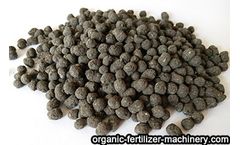Refine by
Micronutrient Articles & Analysis
42 articles found
By encapsulating essential vitamins, minerals, and other micronutrients within liposomes, food manufacturers can create products with enhanced nutritional profiles. ...
Quality management in food processing is crucial for food safety, consistency, and compliance with regulatory standards. It includes strict processes to control production, from sourcing through to ...
Essential nutrients, categorised as micronutrients and macronutrients, play key roles in sustaining the plant’s life cycle. Micronutrients, required in smaller amounts and macronutrients needed in larger amounts are essential for achieving optimal plant growth. ...
Nutrients Rhodomonas requires a balanced supply of nutrients, including nitrogen, phosphorus, and micronutrients, for robust growth. These nutrients can be provided through a culture medium that is regularly replenished or through continuous nutrient feeding. ...
It contains nitrogen, phosphorus, potassium, and other micronutrients that support plant growth. The reduced water content makes it easier to handle and apply to fields. 2. ...
With heavy steam heat sanitation, the possibility of feed mold as well as insects is decreased, as well as the palatability of the feed is boosted. ( 2) Detailed nutrition, pets are challenging to be picky eaters, lower nutrient splitting up, and make sure everyday balanced feed supply. ( 3) Decreasing the fragment volume can shorten the feeding time as well as lower the ...
It also contains vitamins and macro- and micronutrients. Textured cattle feed is sometimes called "sweet feed" because it contains molasses. ...
From ox and plow to the advent of autonomous tractors, farmers have always sought new and more efficient ways to grow crops. The demand for high-quality, protein and nutrient-rich food increases annually as the global population is on pace to reach 9 billion by 2050. The explosive growth of plant-based protein food products is testament to the nearly insatiable demand for healthy calories. ...
In any type of offered room, even more item can be kept, and it is less at risk to moisture, making it very easy to shop and transportation in bulk. ( 5) In the process of loading, dumping as well as managing, various ingredients in the feed will certainly not be rated to maintain the uniformity of micronutrient in the feed as well as avoid animals being particular eaters. ...
When chemicals are added to the water supply there is a potential for undesirable chemical reactions, particularly with phosphorous and some micronutrients. It is always recommended that an adequate water analysis be done before injecting any chemicals containing phosphorous. ...
Tackling Malawi's Hidden Hunger through Selenium and Iodine biofortification to green vegetables and conservation agriculture (CA) field crops Introduction In sub-Saharan Africa, micronutrient deficiencies are common in poor and rural areas, due to over-farmed, depleted soils and restricted diets. ...
Depending on the light intensity each part like macronutrients (N, P, K) and micronutrient can lead to limitations in growth and development. While most Substances can be applied quite easily, carbon dioxide has a special role. ...
Biochar could also come up with a great soil additive, because it is packed with the micronutrients required to boost crop yields also it can improve the drainage properties of your ground. ...
In Pakistan the recommended method of fertilizer application is to broadcast fertilizer on the surface of the soil, followed by incorporation, before seeding of the crops (Malik et al., 1992). Micronutrient such as boron is the most important for the sustainable production of Basmati rice. ...
Organic fertilizers usually provide secondary and micronutrient needs, but not in synthetic fertilizers. The content of nitrogen, phosphorus and potassium in organic fertilizer is lower than that in chemical fertilizer, but it can keep the soil fertility longer. ...
Importance of Plant Micronutrients Micronutrients are needed only in small quantities. Nevertheless, they are essential for plant growth and health. ...
Also known as inorganic fertilizers, including nitrogen, phosphate, potash, micronutrients, compound fertilizers, etc. It has strong pertinence and quick effect. ...
Full of Nutrients Unlike synthetic fertilizers that offer only primary nutrients to the plants, organic fertilizers go further with the micronutrients as well. Along with Nitrogen, Phosphorus and Potassium, it also comes with adequate levels of micronutrients such as calcium, magnesium, zinc, sulfur, and copper. ...
More than 3 billion people now consume 20% or more of their animal protein from seafood, along with essential omega-3 fatty acids and micronutrients. Currently, agriculture and livestock production are responsible for 60% of freshwater withdrawals globally, and more than 90% of consumptive use. ...
The other macronutrients – such as calcium, magnesium, and sulphur – as well as the eight important micronutrients – boron, chlorine, copper, iron, manganese, molybdenum, nickel, and zinc – which are important for metabolism, must be present in quantities necessary for plants to function properly. ...


















